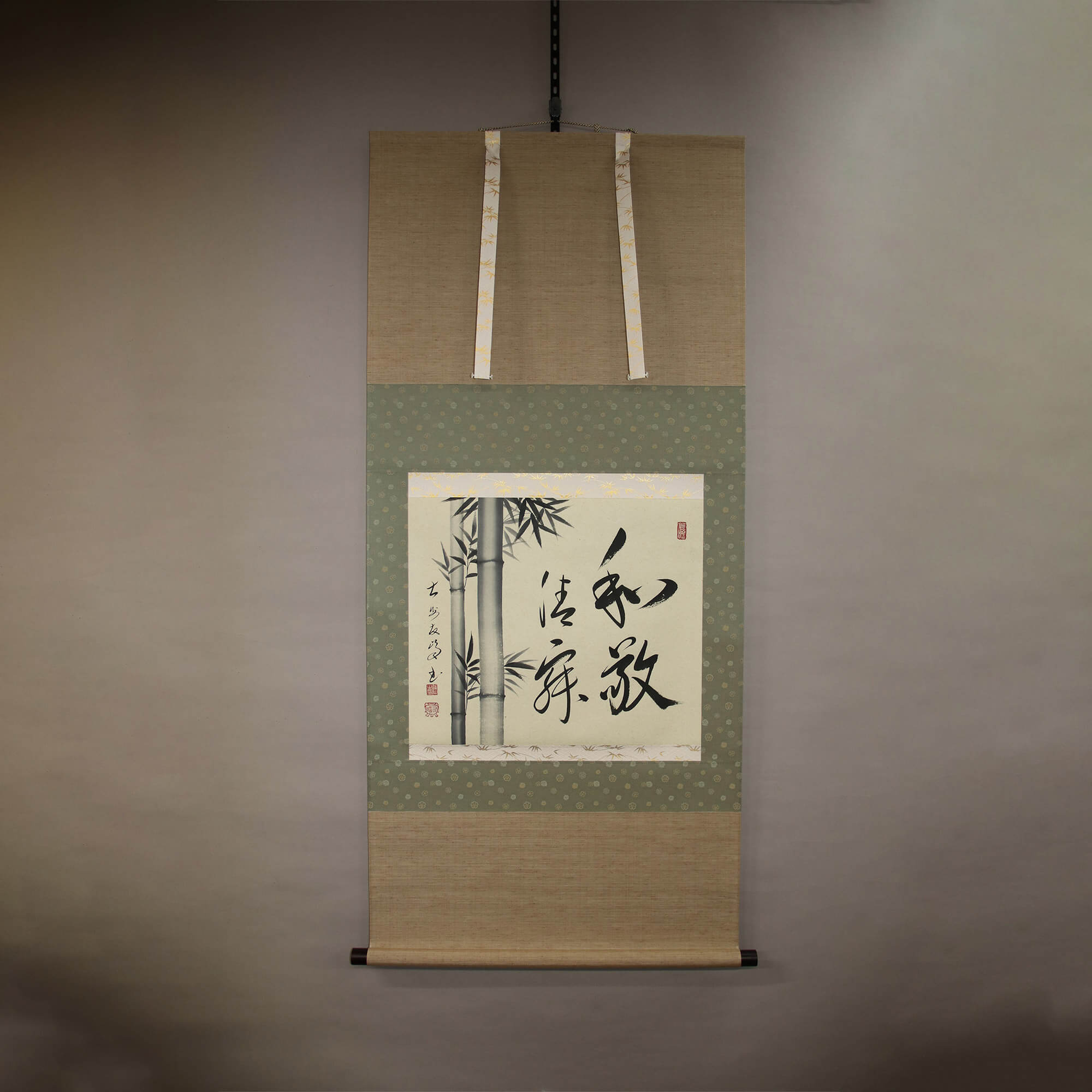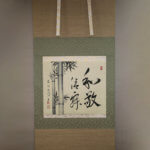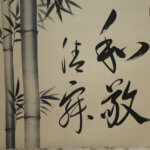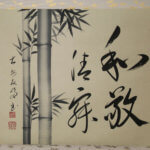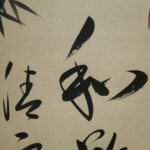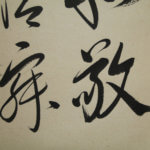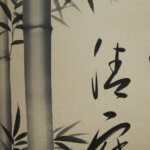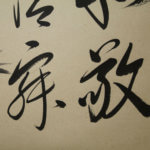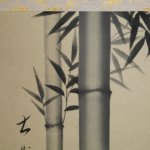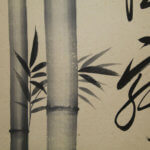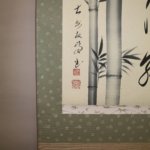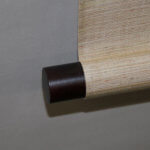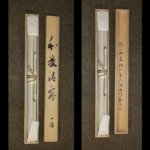Products Lineup
News / Blog
Other Menus
Kakejiku Hanging Scroll: Calligraphy: Harmony, Respect, Purity and Tranquility & Bamboos / Takahashi Yūhō - Wakei Seijaku & Take
- Product ID
- 0252
- Name
- Takahashi Yūhō
- Profile
The chief priest at the Daianzen-ji temple in Fukui pref.
1948
Born in Fukui city, Japan
1970
Graduated from the Kyoto Hanazono University (Major: Buddhism)
Joined and practiced asceticism at the Kaisei-ji temple in Hyogo for 6 years1989
Appointed as the chief priest at the Daianzen-ji temple in Fukui
2008
Exhibition at the Takumi museum in JR Gifu Station
Exhibition at the art gallery in Inoue department in Nagano2011
Opened a gallery in the Daianzen-ji temple
Also appointed as the chief priest at the Housyou-ji temple in Ishikawa
Exhibition at the “Gallery Metanoia” in Paris, France2014
Performed at the Sarah Lawrence College in NY, USA
- Size
- 690mm x 1410mm
- Roller End Material
Redsandalwood- Material of the Work
- Japanese paper
- Stock Condition
- Sold out
- Duty and Taxes
Import duty and taxes are beyond our control and may apply to your shipment. Please noted that these fees are the responsibility of the buyer.
- Description
Takahashi Yūhō is a monk, who serves as the abbot of the Daiaji, Zen temple in Fukui Prefecture. He is quite popular for his lightly spoken Dharma talks. As an accomplished calligrapher, he has also left behind many works.
This joint work features a Japanese-style painter Miyake Wakō’s painting of bamboos with the calligraphy of “Wakei Seijaku” written by Takahashi Yūhō. The calligraphy says, “Get along with everyone, value harmony in everything, respect for each other, do everything with a pure heart, and you’ll have a calm and undisturbed mind in all circumstances.” These are the words that describe the attitudes at the tea ceremony. Under the deep history of association between Zen Buddhism and the tea ceremony, the Zen priest Takahashi Yūhō expressed the meaning of these words in a relaxed and soft calligraphic style. The bamboos painted in a single color of sumi ink next to the calligraphy represent a dignified appearance growing in the silence to allow the calligraphy and the painting to resonate with each other, which thus makes this one of the noble works of art.

